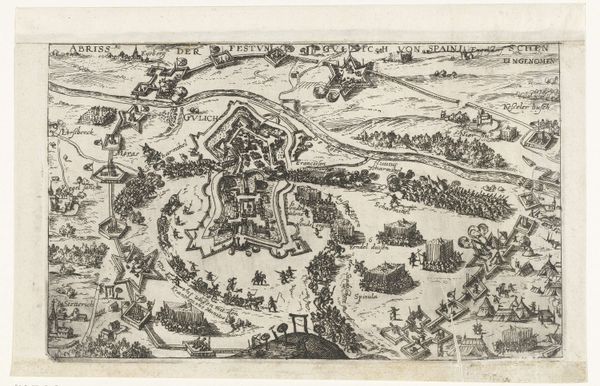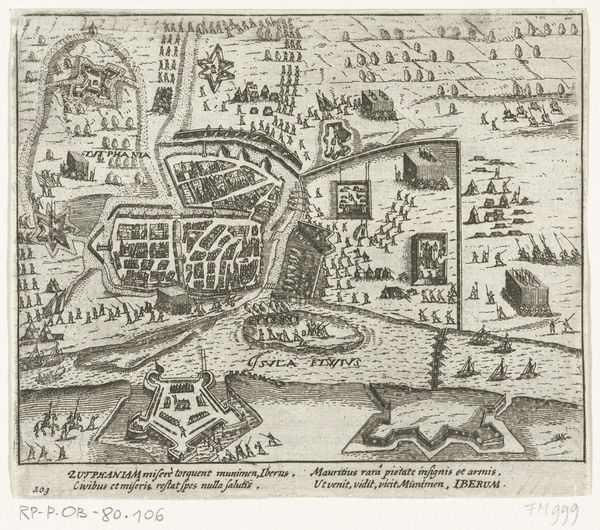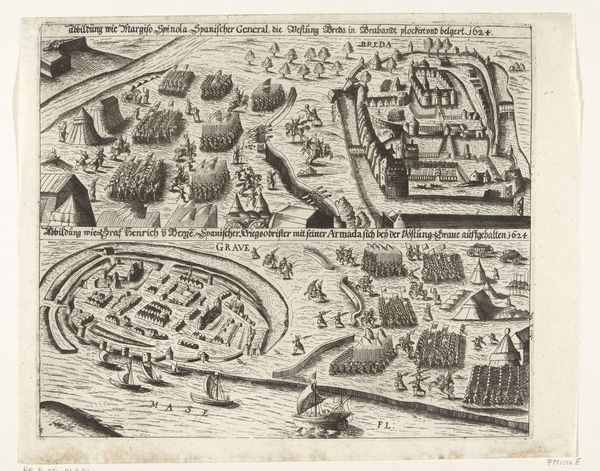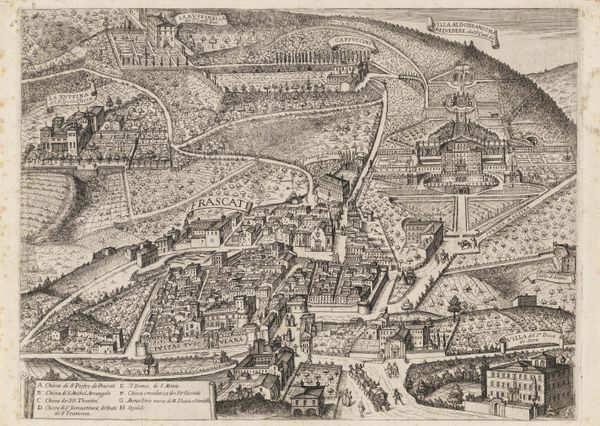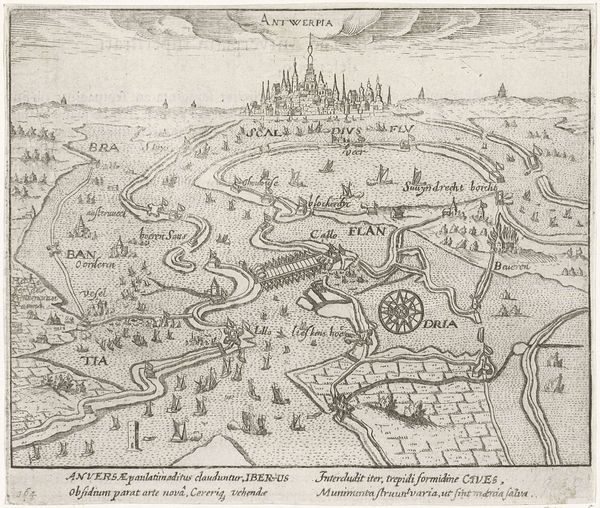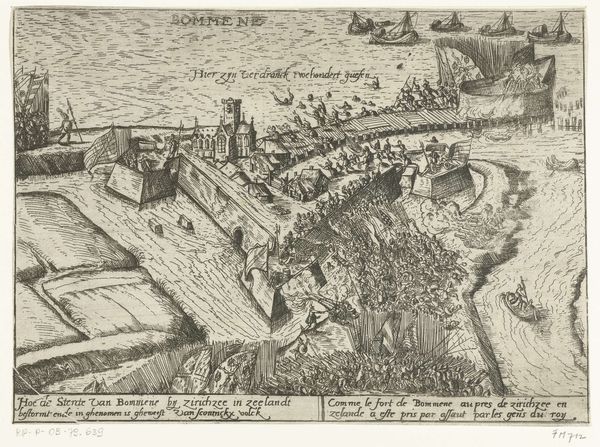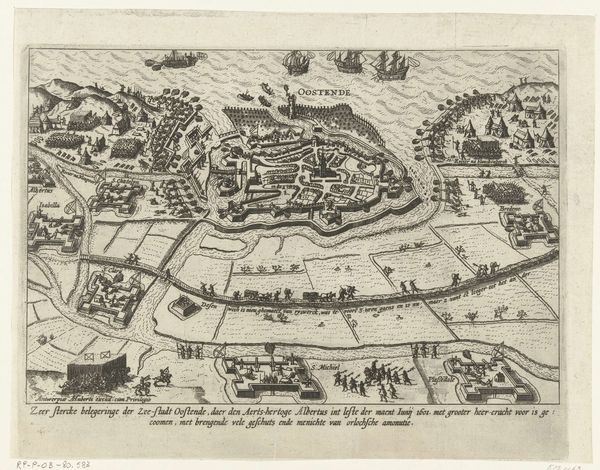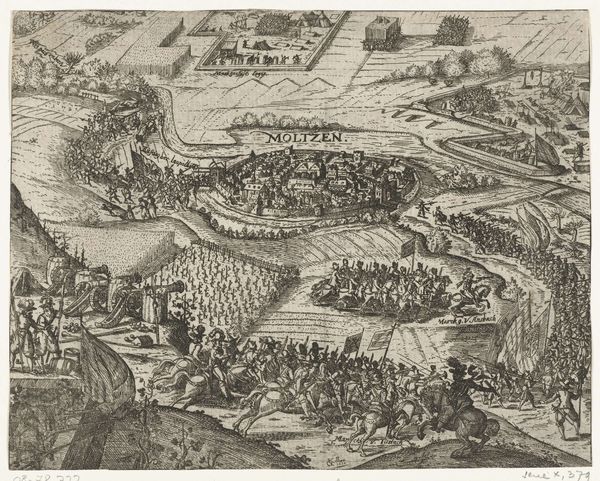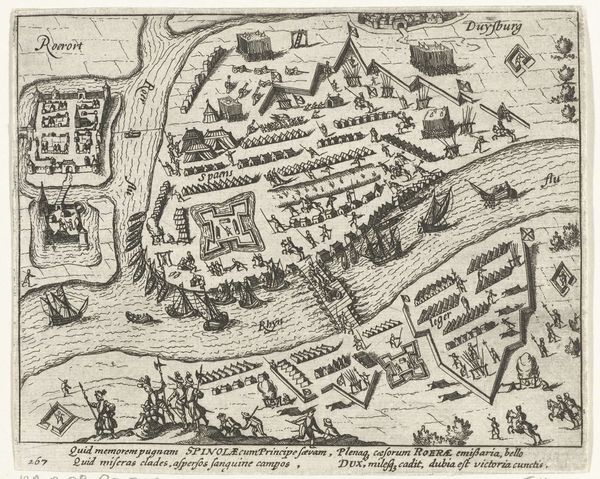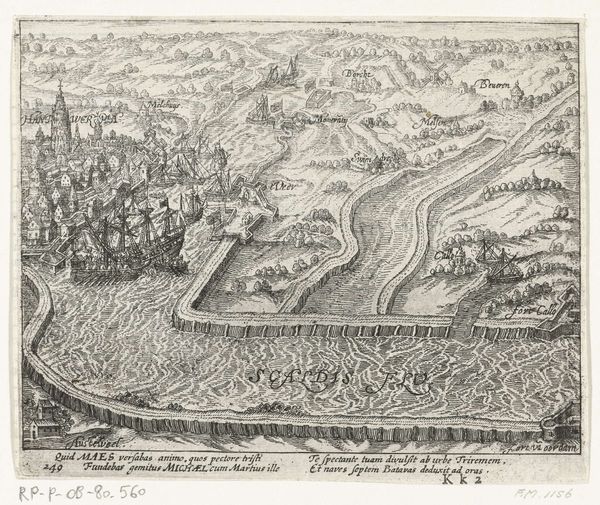
drawing, print, ink, engraving
#
drawing
#
narrative-art
# print
#
landscape
#
ink
#
cityscape
#
history-painting
#
engraving
Dimensions: height 380 mm, width 495 mm
Copyright: Rijks Museum: Open Domain
Curator: Here we have Nicolaes van Geelkercken’s print from 1610, titled “The Siege of Jülich”. It’s currently held here at the Rijksmuseum. What’s your immediate response to it? Editor: The meticulous detail is striking. The entire scene is rendered with incredible precision, but it’s more than just a representation, it feels symbolic, as though it captures not only the event but its historical significance. Curator: Precisely. Van Geelkercken created this engraving to commemorate a pivotal event, viewing the siege as more than just a military engagement. How does this perspective change how we understand the symbols being employed? Editor: Consider the sharp contrast between the organized fortifications of the besiegers and the seeming vulnerability of the city itself. The contrast emphasizes the resolve and superior strategy of the attacking forces. Also, notice the arrangement of the siege, the methodical encircling. Curator: And it’s crucial to remember the historical context. The Siege of Jülich occurred during a succession crisis, as larger political struggles enveloped the Dutch Republic and the Holy Roman Empire. Thus, the symbolism is directly linked to complex geopolitics of that period. Editor: The detailed landscape itself contributes. Even with a siege underway, nature endures, suggesting an immutable order to things, or the inevitable flow of historical forces regardless of human conflict. Curator: Van Geelkercken aimed to portray a decisive moment in a protracted conflict. These kind of prints functioned as accessible propaganda to shape public opinion, celebrating military victories. It helped reinforce the power and legitimacy of those in charge. Editor: Right. Every plume of smoke, every tiny figure is meant to communicate not only the chaos of battle but the purpose. You have a feeling of an inevitability, of a preordained historical trajectory which communicates power. Curator: Thinking about it, I see this piece as a testament to the power of early modern print culture. It's remarkable how such a complex historical and political message could be disseminated through a visual medium to a wide audience. Editor: Absolutely. Reflecting on this print reveals so much about the intersection of conflict, imagery, and political messaging during this pivotal time in history.
Comments
No comments
Be the first to comment and join the conversation on the ultimate creative platform.

